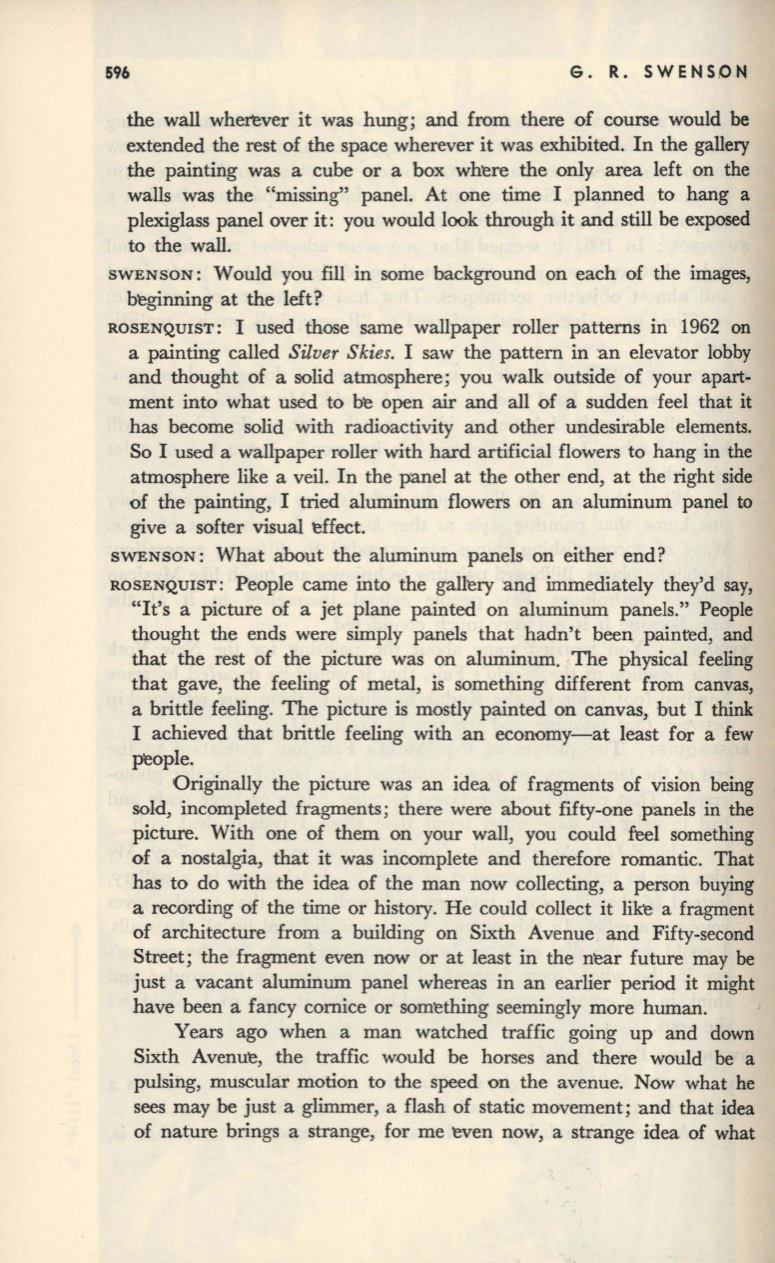
596
G. R. SWENSON
the wall wherever it was hung; and from there of course would
be
extended the rest of the space wherever it was exhibited. In the gallery
the painting was a cube or a box where the only area left on the
walls was the "missing" panel. At one time I planned to hang a
plexiglass panel over it: you would look through it and still be exposed
to the wall.
SWENSON:
Would you fill in some background on each of the images,
beginning at the left?
ROSENQUIST:
I used those same wallpaper roller patterns in 1962 on
a painting called
Silver Skies.
I saw the pattern in an elevator lobby
and thought of a solid atmosphere; you walk outside of your apart–
ment into what used to be open air and all of a sudden feel that it
has become solid with radioactivity and other undesirable elements.
So I used a wallpaper roller with hard artificial flowers to hang in the
atmosphere like a veil. In the panel at the other end, at the right side
of the painting, I tried aluminum flowers on an aluminum panel to
give a softer visual 'effect.
SWENSON:
What about the aluminum panels on either end?
ROSENQUIST:
People came into the gallery and immediately they'd say,
"It's a picture of a jet plane painted on aluminum panels." People
thought the ends were simply panels that hadn't been painted, and
that the rest of the picture was on aluminum. The physical feeling
that gave, the feeling of metal, is something different from canvas,
a brittle feeling. The picture is mostly painted on canvas, but I
think
I achieved that brittle feeling with an economy-at least for a few
people.
Originally the picture was an idea of fragments of vision being
sold, incompleted fragments; there were about fifty-one panels in the
picture. With one of them on your wall, you could feel something
of a nostalgia, that it was incomplete and therefore romantic. That
has to do with the idea of the man now collecting, a person buying
a recording of the time or history. He could collect it like a fragment
of architecture from a building on Sixth Avenue and Fifty-second
Street; the fragment even now or at least in the near future may
be
just a vacant aluminum panel whereas in an earlier period it might
have been a fancy cornice or something seemingly more human.
Years ago when a man watched traffic going up and down
Sixth Avenue, the traffic would be horses and there would be a
pulsing, muscular motion to the speed on the avenue. Now what he
sees may
be
just a glimmer, a flash of static movement; and that idea
of nature brings a strange, for me even now, a strange idea of what


